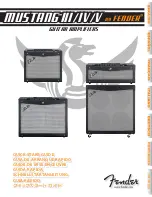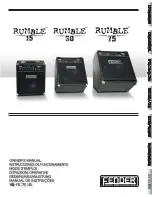
1 1
3 Soft Keys
These keys operate functions depending on the System Component Key setting.
numeric keypad:
In
preamp
mode the numeric keys will switch between the amplifier inputs
(1 - cd, 2 - tuner, 3 - tape, 4 - av, 5 - aux 1, 6 - aux 2). In
cd
mode the numeric keys will select tracks.
In
tuner
mode the numeric keys will select tuner presets or can be used directly to input station
frequencies.
prog:
In
preamp mode
the
prog
key function varies depending upon the specific amplifier model in
use. Firstly, some models incorporate a programmable volume control system that enables different
source component output levels to be matched. Secondly, some models incorporate optional
automatic source switching which will switch the input of the amplifier as soon as any handset key
appropriate to a particular source is operated. For example, if the tuner input is selected on the
amplifier and the CD
play
key is operated on the handset, the amplifier will switch to the CD input.
Thirdly, if you have a surround sound processor connected to the A/V input, the volume control on the
amplifier can be disabled, allowing the processor to take over control of the output level from the
power amplifier stage (unity gain).
To program the volume control for each input first set the volume control to a comfortable listening
level with the loudest source (probably CD). Enter program mode by pressing and holding the
prog
key
until the amplifier volume control indicator flashes. Select the input to be adjusted using the handset
and use the vol
up
and
down
keys to set the volume to a comfortable listening level. The amplifier
volume control will not rotate during this operation. Select a further input to adjust. To exit program
mode press and hold the
prog
key until the volume control indicator stops flashing, or operate any
control on the amplifier.
To access automatic source switching enter program mode as described above. Use the handset
mon
key to toggle automatic switching on and off. The
mon
button on the amplifier will illuminate when
source switching is automated. Exit the program mode as above.
To utilise the surround sound processor unity gain function, enter program mode as described above.
Use the handset
mute
key to toggle the function on and off. The
mute
button on the amplifier will
illuminate when unity gain is selected. Exit the program mode as above.
The unity gain function
should only be used where the amplifier is used in a correctly configured A/V system. Damage may
result if the unity gain feature is used inappropriately.
To return to the default settings, press and hold the
prog
key until the amplifier volume control
indicator flashes. Press and hold
disp
key until the volume control indicator stops flashing.
In
cd mode
the
prog
key enables specific CD tracks and their play order to be selected. To select a play
order select a track number from the numeric keypad followed by the
prog
key until the desired
selection is complete. During selection, the track number indicated in the player display will be
followed by either “P”, “-” or a space. “P” indicates that the track is already selected. “-” indicates that
the track can be selected. A space indicates that there is no more memory available.
The
prog
key can also be used to delete tracks from a play order. To delete a track, press and hold the
prog
key until the
prog
indicator in the CD display illuminates then delete the track or tracks using the
numeric keypad followed each time by a further operation of the
prog
key. During deletion the track
number indicated in the player display will be followed by either “C”, “-” or a space. “C” indicates that
the track is already deleted. “-” indicates that the track can be deleted. A space indicates that there
is no more memory available.
The play order can be reviewed by pressing
prog
while the player is either stopped or playing. The
player display will then scroll through the selected tracks. The
prog
indicator on the player display will
illuminate when a play order has been programmed. To clear memory press and hold the
stop
key.
In
tuner mode
the
prog
key enables specific FM station frequencies to be assigned to preset memory.
To assign a station to a preset first tune manually by inputting the station frequency directly from the
numeric keypad or by using the
up
or
down
keys (or
scan
). Press and hold the
prog
key on the handset.
The tuner is now in
preset programming mode
- the preset indicator will flash and the display will
show “— — ”. Press the desired pre-set number from the numeric keypad. The display will show “— ” or
“P” if the preset number is already in use. Exit from program mode and save the new or overwritten
preset by pressing and holding the
prog
key. To exit program mode without saving (or overwriting) a
preset select “0 0” on the numeric keypad. To erase a preset number, select the preset and press and
hold the
display
key. To clear all preset numbers press and hold the
program
key followed by the
display
key.
d i s p l a y :
In
cd mode
the
d i s p l a y
key will scroll through these options: tracks (
“time”
indicator off),
time (
“ t i m e ”
indicator on) and display off. In
tuner mode
the
display key
will simply toggle between
on and off.






























